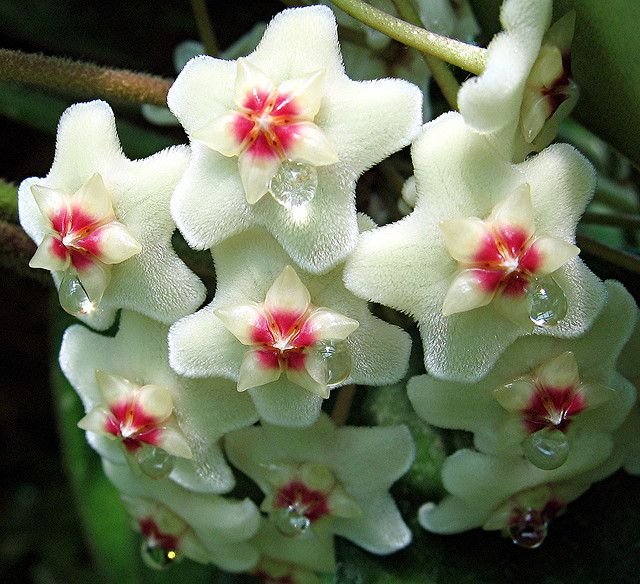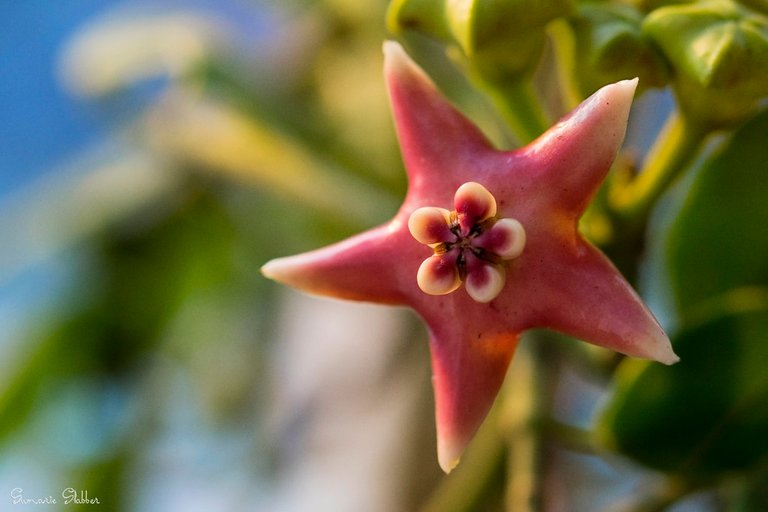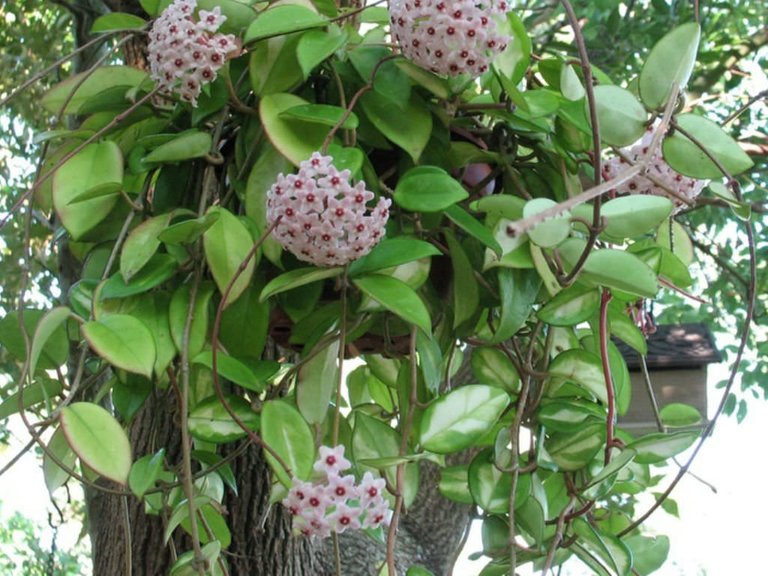
Hoya is a vining succulent that roots along it long, branching stems. In the wild it climbs trees and scrambles over rocks, growing continuously and reaching lengths of 20 feet(6 m) or more. The leaves are smooth, thick and fleshy, up to 3 inches (7.5 cm) long, and paired on opposite sides along the stems.

Twenty or more star shaped flowers up to 0.5 inch (1.5 cm) across, typically light pink (but may vary from near-white to dark pink), are borne in pendulous convex clusters, 2 or 3 inches (5 or 8 cm) across. The leaves and the flowers are often described as “waxy”.

Hoya plants don’t ask for much, beyond the well-draining soil and the warm humid conditions that many tropical flowers crave. They don’t like wet feet or heavy soil, and as many grow as epiphytes in nature (similar to bromeliads and orchids). Give them at least a half day of sunshine, and bring them indoors when temperatures drop below 50 degrees F (10 degrees C).

When your Hoyas finishes blooming, leave the flower stalk, as it may produce new flowers. Removing the stalk forces the plant to produce a new stalk, which delays blooming and wastes the plant’s energy. They are light feeders, and a monthly drink of compost tea or dilute fish emulsion provides all the nutrition these tropicals need.

Hoyas like the security of a snug pot, and plants that are a bit root bound will flower more prolifically than those that are swimming around in a giant pot.